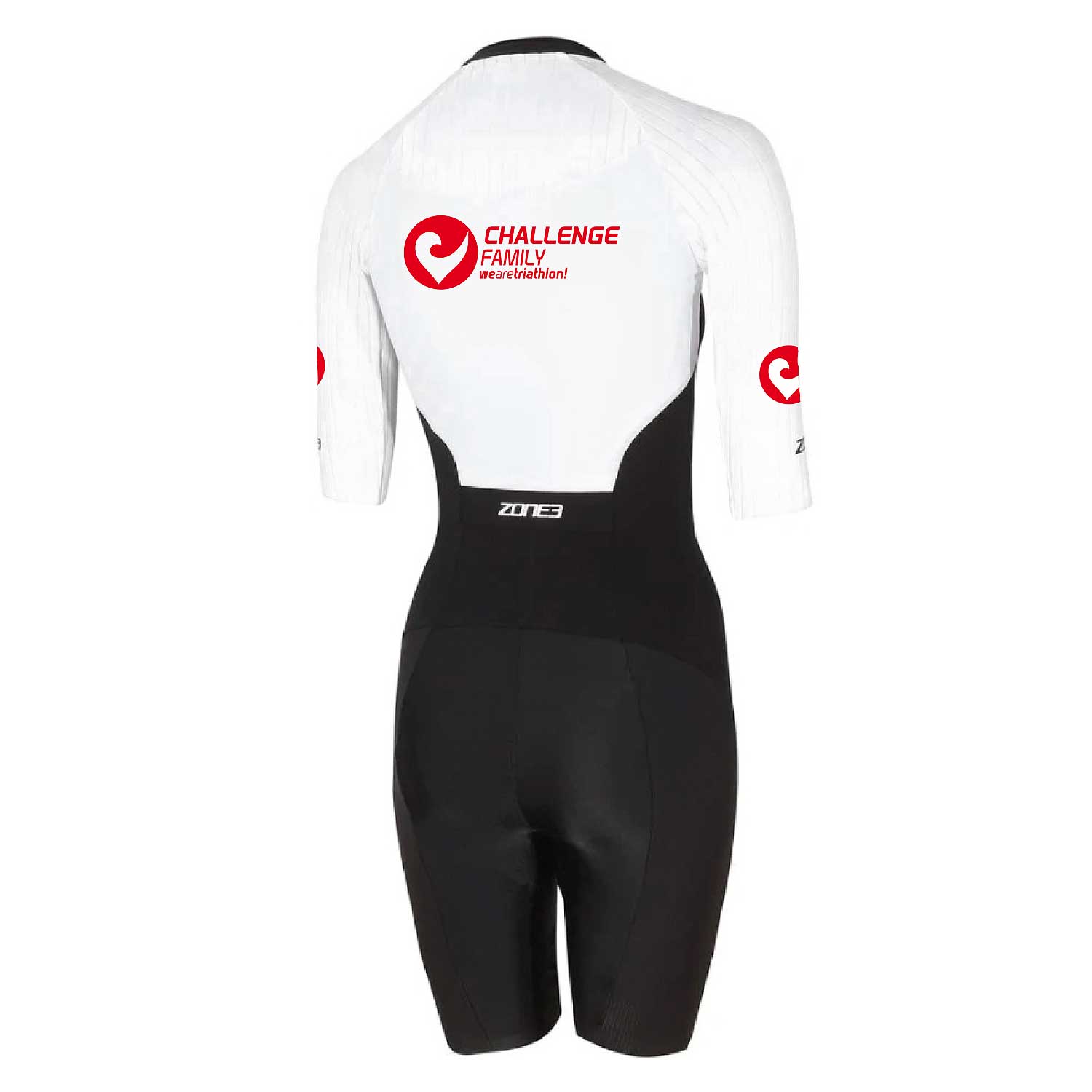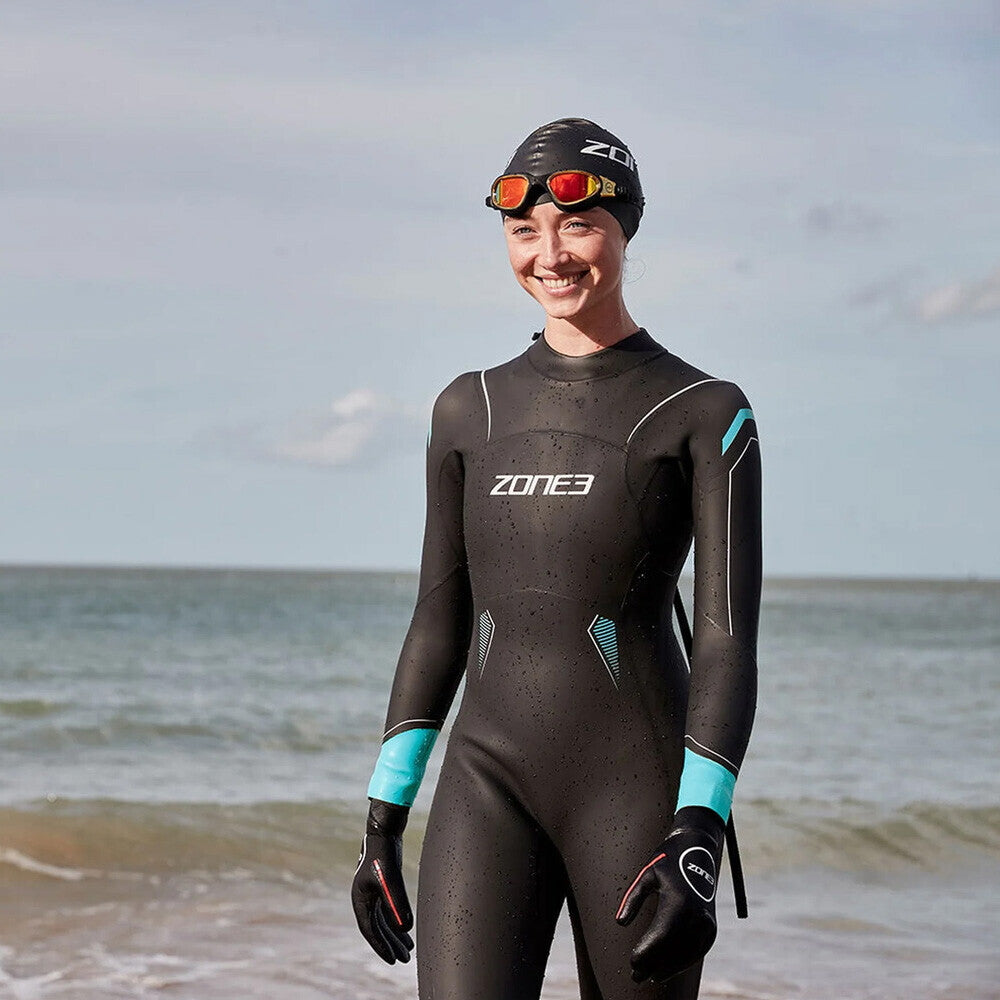Schmerzen im Kniebereich sind die häufigste Ursache für Trainingspausen und den Besuch beim Sportarzt. Knorpel, Muskel, Sehnen und Knochen bilden einen wunderbaren Kompromiss aus Stabilität, Dämpfung und Beweglichkeit – sind aber auch anfällig für Überlastung und Verschleiß. Gerade bei Triathleten sind die Ursachen für Schmerzen komplex und nicht immer offensichtlich. In diesem Beitrag stellen wir euch die drei häufigsten Knieprobleme vor, ihre Ursachen, aber auch Vorbeugungs- und Behandlungsmöglichkeiten.
Knieschmerzen sind ein recht allgemeiner Begriff für eine Vielzahl von möglichen Verletzungen, Überlastungen und Verschleißerscheinungen. Durch die kontinuierlichen, zyklischen Bewegungen haben wir Triathleten häufig mit Überlastungserscheinungen zu kämpfen. Hier handelt es sich also weniger um Knochenbrüche und Bänderrisse – wie sie so oft in Spielsportarten vorkommen – sondern um allmähliche Überanspruchung der weichen Strukturen wie Bändern, Schleimbeuteln und Knorpel. Drei Syndrome begegnen uns am häufigsten:
1) Das ITB-Syndrom oder „Läuferknie“
Beim ITBS treten die Schmerzen vor allem im äußeren Kniebereich auf, es kann auch zu Schwellungen kommen. Grund für die Schmerzen ist der Faserzug, welcher vom Becken bis zum Schienbein verläuft (Tractus iliotibialis) und dabei einen Umweg außen um die Kniescheibe nehmen muss. Durch kontinuierliche Reibung wird er gereizt – ähnlich einem Seil, das unter hohem Druck über eine Kante scheuert. Je höher der Druck, desto größer der Schmerz. Gleichzeitig belastet diese Faser auch einen Schleimbeutel und die Knochenhaut am Oberschenkel, die sich entzünden können. Die Schmerzen treten nicht nur bei längerer Laufbelastung auf, sondern auch beim Gehen und lockerem Radfahren.
2) Knorpelverschleiß oder das „Runner’s Knee“
Irreführend sind die Bezeichnungen „Läuferknie“ und „Runner’s Knee“. Übersetzt bedeuten beide dasselbe, allerdings bezeichnen sie im jeweiligen Sprachraum ganz unterschiedliche Beschwerden. Das „Runner’s Knee“ beschreibt vor allem den Knorpelverschleiß im Knie. Die Schmerzen treten dabei vor allem an bzw. unter der Kniescheibe auf und sind oft nach der Belastung sehr stark. Treppensteigen und Abwärtslaufen sind sehr schmerzhaft. Teilweise ist sogar ein ekeliges Knirschen zu hören. Ausgelöst wird dieser Schmerz durch einen unnormalen Druck der Kniescheibe auf den Knorpel, der dadurch überlastet wird und degeneriert.
3) Das Patellaspitzensyndrom oder „Jumper’s Knee“
Wie der Name schon sagt, tritt das „Jumper’s Knee“ vor allem bei Sportlern auf, die viel springen müssen. Wer schnell und viel läuft, leistet damit aber genauso eine Abfolge von Sprüngen. Beim Jumper`s Knee tritt der Schmerz unterhalb der Kniescheibe auf. Die Patellasehne (das Kniescheibenband) ist überlastet und gereizt. Die Schmerzen sind am Größten, wenn das Gelenk ganz gestreckt wird. Im letzten Stadium dieser Reizung besteht sogar die Gefahr, dass die Sehne reißt.
Ursachen für Knieschmerzen
Die Ursachen für Knieschmerzen sind so vielfältig wie die Beschwerden selbst. Bei anhaltenden Schmerzen ist eine Pause zwingend notwendig und der Gang zum Arzt ratsam. Der kann bei der Ursachenforschung genetisch bedingte Probleme oder andere Erkrankungen und Verletzungen (z.B. Meniskusriss) erkennen. Sind diese auszuschließen, müssen die „üblichen Verdächtigen“ auf den Prüfstand gestellt werden:
- Schuhe,
- Trainingsumfänge und Belastungssteigerung,
- Sitzposition auf dem Rad,
- Lauftechnik,
- allgemeine Athletik
- und muskuläre Dysbalancen.
Sehr viele Überlastungserscheinungen hängen mit diesen Faktoren zusammen. Zwar sind Anfänger und Frauen für Knorpelprobleme anfälliger, ebenso wie es Vieltrainierer und Übergewichtige für alle Überlastungen sind – aber falsches Schuhwerk und undurchdachtes Training bringen jeden in die Risikogruppe.
Abhilfe bringt die genaue Analyse aller Faktoren. Ein Physiotherapeut kann mit einem Muskelfunktionstest muskuläre Dysbalancen erkennen. Ein Orthopäde untersucht auf eventuelle Fehlstellungen (O-Beine begünstigen z.B. das ITB-Syndrom) und weiß, ob und welche Einlagen nötig sind. Athletiktraining sollte Teil eines jeden Triathlontrainings sein (Übungen und Informationen findet ihr auf triathlon.de) und auch die Sitzposition auf dem Rad sollte fachmännisch kontrolliert werden.
Behandlung und Wiedereinstieg
Die Dauer der Trainingspause kann sehr unterschiedlich sein. Oft ist es möglich, mit dem Schwimmtraining weiterzumachen und Krafttraining für den Oberkörper zu intensivieren. Die Laufpause wird mindestens mit zwei Wochen angesetzt. Der Arzt verschreibt evtl. Schmerzmittel und entzündungshemmende Salben oder Medikamente und gibt genauere Angaben bezüglich Pause und weiterer Behandlung. Die Pause kann jedoch sinnvoll genutzt werden mit Ursachenforschung und –eliminierung.
Der Wiedereinstieg in das Lauf- und Radtraining sollte behutsam erfolgen. Frei nach dem Motto: Mühsam ernährt sich das Eichhörnchen sind große Umfänge, große Gänge und Bahntraining tabu. Gerade, wenn ihr eure alten Bewegungsmuster und Trainingsgewohnheiten aufbrechen wollt – egal, wie „schlecht“ sie vorher waren – ist Geduld gefragt. Tritt der Schmerz wieder auf, muss das Training sofort abgebrochen werden – nicht in den Schmerz reinlaufen!
Vorbeugung
Triathlontraining ist oft eine Gratwanderung zwischen Leistungssteigerung und Überlastung. Wir können unsere Trainingsqualität und die -kontinuität steigern, wenn wir uns einen Teil der wertvollen Zeit für scheinbar banale und nervige Dinge nehmen. Rumpfstabilisation und gezieltes Dehnen sollte regelmäßig auf dem Programm stehen. Es sollte auch ein Programm und die dazugehörige Protokollierung geben – mehr als 10% Belastungssteigerung führen langfristig zu Problemen. Mit den Trainingsaufzeichnungen könnt ihr nachverfolgen, welches Training ihr gut vertragen habt und was zu Problemen geführt hat. Alle oben stehenden „üblichen Verdächtigen“ könnt ihr schon jetzt auf den Zahn fühlen – das beugt nicht nur Überlastungen vor, sondern macht euch generell effektiver und schneller.




















